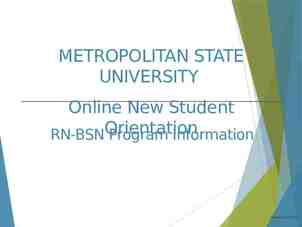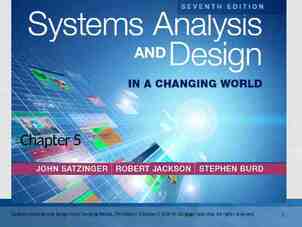September 28, 2002 eSupport Tools for Help Desks Tom Smetana Help
34 Slides2.34 MB
September 28, 2002 eSupport Tools for Help Desks Tom Smetana Help Desk Practice Director Spherion Technology [email protected]
Agenda Industry Trends What is eSupport? Influx of eSupport Tools eSupport Benefits Impact to the Help Desk The future with eSupport Bottom Line
Industry Trends Workforce is growing more mobile – Cellular phones – Personal Digital Assistants (PDA) – Laptop Computers Customers are lacking patience, and have a higher sense of urgency in today’s environment Users want “anywhere, anytime” access
Industry Trends In 2001, 80% of workers in major corporations required remote access capability 50% worked remotely full-time There has been an increased reliance on technology in business and the home Source: Gartner Group
Industry Trends In 2001, 530 million people had Internet access worldwide By 2005, that number should increase to 1.12 billion worldwide The top 15 countries will account for nearly 82% of the worldwide Internet users (including business, educational, and home users) Source: Computer Industry Almanac 1,600,000,000 1,400,000,000 1,200,000,000 1,000,000,000 800,000,000 600,000,000 400,000,000 200,000,000 0 2001 2004 2005 2007
Industry Trends
Industry Trends Help Desk call volumes increasing at a rate of 20% per year projected through 2003 Most common Help Desk calls typically involves configuration management 80% of Help Desk time is spent in diagnosing problems Source: Customer Support Management, Gartner, IDC
Industry Trends Help Desk calls growing from an average 1.75 calls per end-user per month in 1999 to 3 calls per end-user per month in 2003 At this rate of growth, the ratio of Help Desk professionals to end users will change: – Today: One per 350 to 400 end-users – 2003: One per 250 to 300 end-users Source: META Group
Industry Trends Rising costs of dedicated phone and desk-side support The increased expense and recurring issues associated with hiring and retaining qualified support professionals Growing demand for “anywhere, anytime” support
Solution? eSupport can help: – – – – – End-users help themselves “anywhere, anytime” Correct problems without user intervention Lower the cost-per-call Improve Analyst productivity Minimize the amount of costly desk-side visits by technicians – Improve customer satisfaction
What is eSupport? eSupport, as defined by STI Knowledge, is broken down into 3 main parts: – Integrates methods of support, connecting customers directly to the support organization for immediate personalized service – Internet-based tools and services that deliver customer care for any client “anywhere, anytime” – Automatically eliminates problems and prevents service calls
eSupport Spending Trends 16.0 14.0 Spending in Billions 12.0 10.0 8.0 6.0 4.0 2.0 0.0 1999 Source: IDC 2000 2001 (est.) Year 2002 (est.) 2003 (est.)
eSupport Management Evolution Customer Service Centers IT Help Desk ESM and Service Center Tool Integration Consolidated Service Desk 1990 1995 ESM Tools Knowledgebases Automating Tools Diagnosing Tools 2000 Self-Healing Tools Knowledge Authoring Self- to Assisted-Service Tools Source: META Group 2005 Employee SelfService / Self-Healing Support Portals
eSupport Tools eMail Live text chat Voice over Internet Protocol (VoIP) Self-healing technology Frequently Asked Questions (FAQs) Knowledge Bases Self-service Tools Others
eSupport Tools eMail – Allows minimal interaction between end-user and Analyst – Information provided to end-user is typically more comprehensive – New technology will allow automated responses without involving an Analyst – Leading Companies – eGain, Genesys, eshare and Stream International Source: Support Technologies
eSupport Tools Text Chat – Instantly connect end-user to an Analyst for realtime communication – End-user gains instant feedback – Allows Analyst to “push” topically-specific Web links to end-user – Analyst can handle up to 5 simultaneous chat sessions – Leading Companies – StartCall, InstantService and Click Interconnect Source: Support Technologies
eSupport Tools Voice over Internet Protocol (VoIP) – Turn text chat session into a live conversation – End-user gains instant feedback – Need for additional equipment by endusers may slow growth projections – Leading Companies – NetDive, eStara and Sideware Source: Support Technologies
eSupport Tools Self-healing technology – Software that will “find and fix” personal computer problems – Software that addresses hardware, software, antivirus, data recovery and software updates – Minimize the need for costly technician visits – Leading Companies – CONNeCTED, Support.com and MetaQuest Software Source: Support Technologies
eSupport Tools Frequently Asked Questions (FAQ) – One of the first self-service tools in the Internet age – Typically outline general problem / issue – Provide a broad response for resolution – Published on a support-providers Web site Source: Support Technologies
eSupport Tools Knowledge Bases – Provides vast array of multi-vendor support content for Analyst – Time-tested solutions for a multitude of problems, products and services – Administrative intensive – Leading Companies – RightAnswer.com, eGain, ServiceWare and FrontRange Solutions Source: Support Technologies
eSupport Tools Self-Service Tools – Allows end-user to leverage established problem resolution information – Gaining acceptance for the savvy end-user – On-line links to both supplier-proprietary and manufacturer knowledge – Automated answers to more basic “how to” questions – Leading Companies – ServiceWare and eGain Source: Support Technologies
eSupport Tools Automated Diagnostics – Enables technicians to “read” individual PC configurations – Automatically “pushes” new fixes or upgrades – Enables Support Center to spend time resolving, rather than diagnosing problems Source: Support Technologies
eSupport Benefits eSupport is “cool” Allow customers to assist themselves eSupport initiative extends across enterprise Can be integrated with existing Help Desk Based on open architecture “Anywhere, anytime” support End-users can participate in process Foundation for the future
eSupport Risks Combining telephone contact with web contact - longer to complete - more expensive Agents skills do not always transfer well between the channel mediums Specific customer segments may not be interested/capable to use the medium provided Impact on infrastructure
Traditional Support Model Incoming Call to Support Center First Level Support Mainframe / Legacy & PC Applications Level II Mainframe / Legacy Level II PC Applications
eSupport Contact Center Support Model Vendor Support Third Level Support Second Level Server Support First Level Support Internal Experts Network Software Network Hardware Application Image Specialized Support Team Specialists Support Center Resources Line of Business Self-Help Self-Healing Intranet Common Database Metrics, Feedback Loop, Surveys, Statistics Other
Impact to the Help Desk End-users enjoy the improved service Call Volumes Will increase with eSupport Call Handle Time Cost Per Incident Analysts spend less time gathering information and more time resolving issues More calls with less handle time Total Request by Analyst
Impact to the Help Desk Impatient end- Level II Analyst Per Employee More calls are “pushed down” to Level I support users search out other support avenues Better tools Call Abandon Rates First Call Resolution End-users are delighted with the improved service Customer Satisfaction
Future of eSupport
Best Practices For The eSupport Model Frequently Asked Questions Voice Over Internet Collaborative Assistance Knowledge Base Environment E-mail Trouble Ticket Navigation Industry Benchmarks
eSupport Assessment Methodology Solution Delivery Create a solution to help achieve objectives, overcome problems, issues and challenges Analysis Compilation Definition Implement the eSupport solution in the Support Center Develop Solution Analyze the data gathered Gather the data needed for analysis through interviews, observation and data gathering Define the Support Center’s objectives, problems, issues and challenges and prioritize in order of importance
Bottom Line End-users are demanding “anywhere, anytime” support End-users lack the patience to wait for support, so they are more willing to help themselves Multitude of eSupport tools and technology Telephone-based customer service is not going to be replaced by the Web eSupport model is one that uses a correct mix of tools and technology Source: Gartner Group CRM 2000, (September 2000)
Bottom Line (cont’d) eSupport should allow Analysts to handle more with less, decrease the total handle time of each call and resolve more calls Complex service requests will require a more knowledgeable, experienced support Analyst eSupport can have a negative impact on the Support Center Analysts should be able to delight the endusers with improved service







































